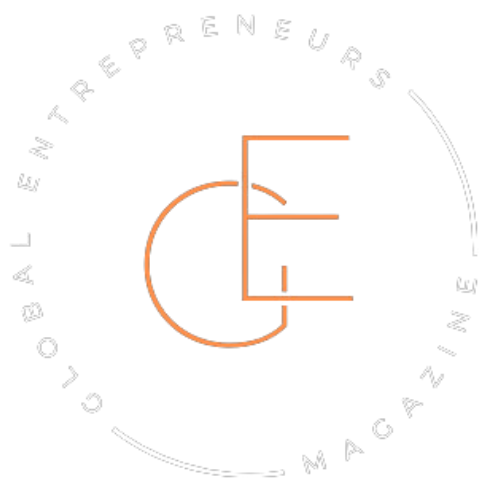There was a time when getting a sales email felt like someone actually meant it. You’d get a message that sounded like a real person wrote it, probably because they did. Maybe it wasn’t perfectly polished. But it felt honest.
That’s changed.
Now, we’re buried in automated sequences pretending to be personal. Messages with our first names dropped in by a script. Follow-ups we didn’t ask for. And sales funnels that feel more like factory belts than conversations.
It’s easy to blame the tools — the CRMs, the email automations, the chatbots. But the truth is, automation didn’t ruin the human side of sales. We did. We got so busy building “scalable systems” that we forgot why people trusted us in the first place.
But it doesn’t have to stay that way.
Why businesses turn to automation in the first place
Running a business means juggling too much, too often. There’s always another email to send, another lead to follow up on, another deal slipping through the cracks. So when automation shows up promising to handle the repetitive stuff, most people don’t think twice.
And fair enough — no one wants to manually chase every cold lead or spend their evenings copying and pasting replies. Automation gives you structure. It gives you breathing room. It keeps things moving while you catch your breath.
But it also comes with a tradeoff. The more distance you put between yourself and your audience, the easier it is to forget they’re real people. Not just clicks on a dashboard. Not just names in a pipeline.
It’s not the tech that’s the problem. It’s what happens when we treat the whole funnel like a machine — when we forget to show up as humans inside it.
You don’t have to choose between scale and sincerity
Automation doesn’t have to sound like a robot. But too often, it does.
Think of those emails that start with “Hey [First Name]” and end with a CTA so generic it could’ve been written for anyone. That’s not personalization. That’s a placeholder wearing a name tag.
The problem isn’t that we use tools. It’s that we forget who they’re meant to serve.
The best sales funnels feel like someone is paying attention — even if they aren’t in the room. They follow up at the right time. They sound like an actual human wrote them. They offer something that feels useful, not forced.
It’s not about scrapping automation. It’s about giving it a voice that still sounds like yours.
Build trust into every automated step
Most automations are built for efficiency. But efficiency alone doesn’t win trust — tone does.
If your email reads like a mass announcement, people will treat it like one. They’ll ignore it. Or worse, they’ll remember it for the wrong reasons. But if it sounds like something you’d actually say in a real conversation, it lands differently.
The small things matter. Subject lines that don’t scream for attention. Messages that don’t oversell. Follow-ups that respect space. Even the timing — when a message shows up can be the difference between welcome and annoying.
Templates aren’t the issue. A great template written with care can still feel personal. It’s when we forget to add ourselves into the message that it falls flat.
So ask yourself at every step: would I talk to someone this way if I were sitting across from them?
Let your human touch shine where it matters most
Not everything should be automated. And honestly, not everything can be.
There are moments in a sales funnel that call for real presence — the kind you can’t fake with a merge tag or pre-scheduled reply. A quick video response. A voice note that doesn’t sound rehearsed. A thoughtful reply to a question that wasn’t in your FAQ.
These are the moments that make people feel seen.
Yes, automation can help you get the lead. It can even help warm them up. But when someone’s on the edge of saying yes — or quietly backing away — that’s where a human makes the difference.
You don’t need to be available 24/7. You just need to show up when it counts, and make it clear that there’s a real person behind the process.
A simple framework for human-first automation
Start with one question: what parts of your funnel feel like a chore?
That’s where automation belongs — the repetitive, the mechanical, the things that drain your energy but still need to happen. Think lead qualification, reminder emails, booking links. These aren’t moments of connection. They’re just logistics.
Then look at the points where trust is built. That first real reply. The follow-up after a demo. The check-in after a purchase. Keep those human. Or at least make them feel that way.
The key is to map your funnel with intention. Not everything needs a script. Some steps need a heartbeat.
Automation should clear the path — not replace the person walking it.
Real-world example: A founder who got it right

Maya runs a small online course business. When she first started, every lead got a personal email. Every question got a voice note. People loved it — and they signed up.
But once the business grew, she couldn’t keep up. So she tried full automation. Fancy funnels. Pre-loaded sequences. It looked polished. But conversions dropped. People stopped replying.
So she rewired everything.
Now, her lead magnet still runs on autopilot. So do her welcome emails. But once someone engages — watches a webinar, books a call, sends a reply — they get her. Not a VA. Not a bot. Her.
She still uses tools. She just doesn’t hide behind them. And her audience knows the difference.
People remember how you made them feel
You can build a sales funnel that runs like clockwork. You can schedule the emails, set up the triggers, track every click. But none of that matters if your audience feels like they’re just part of a queue.
People don’t remember perfect funnels. They remember the message that felt honest. The reply that came with a name and not a signature block. The small moment that didn’t feel scripted.
Automation should help you get closer to people — not hide from them. Use it to free up your time, not your voice.
In the end, trust doesn’t come from the tool you used. It comes from the way you showed up.




